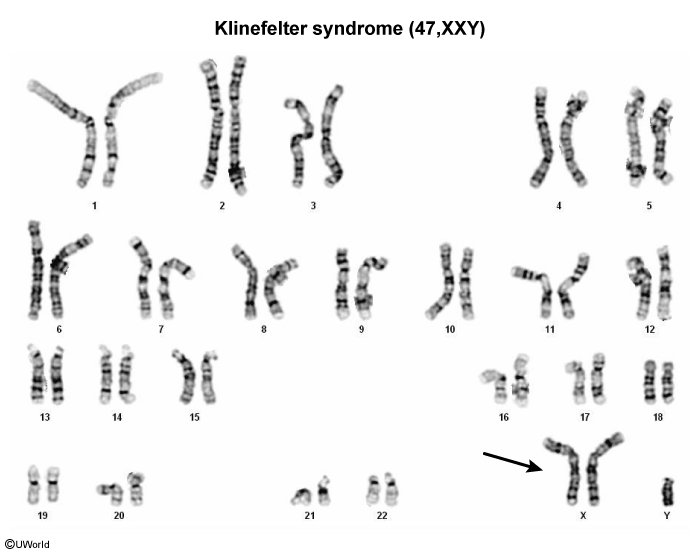Klinefelter Syndrome
Article Sections
Introduction
Klinefelter syndrome, a 47,XXY aneuploidy, is the most common cause of primary hypogonadism in males. Classic physical examination findings include tall stature, small testes, and gynecomastia. Neuropsychologic conditions (eg, learning disabilities) and infertility are common.
Genetics
Klinefelter syndrome, the most common cause of primary hypogonadism in males, is due to meiotic nondisjunction (Figure 1). Improper separation of homologous X chromosomes (ie, sister chromatids) from either parent results in some gametes with an extra X chromosome, resulting in a zygote with 47,XXY aneuploidy.
Normally, one X chromosome in somatic cells in an individual with 2 X chromosomes undergoes X-inactivation, with a few genes that are still expressed (escape inactivation). The extra X chromosome in those with Klinefelter syndrome results in an overexpression of genes that escape X-inactivation.
Continue Learning with UWorld
Get the full Klinefelter Syndrome article plus rich visuals, real-world cases, and in-depth insights from medical experts, all available through the UWorld Medical Library.
Figures
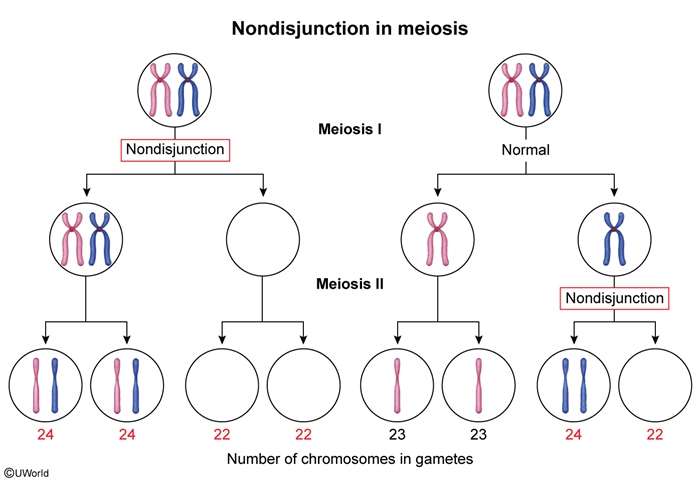
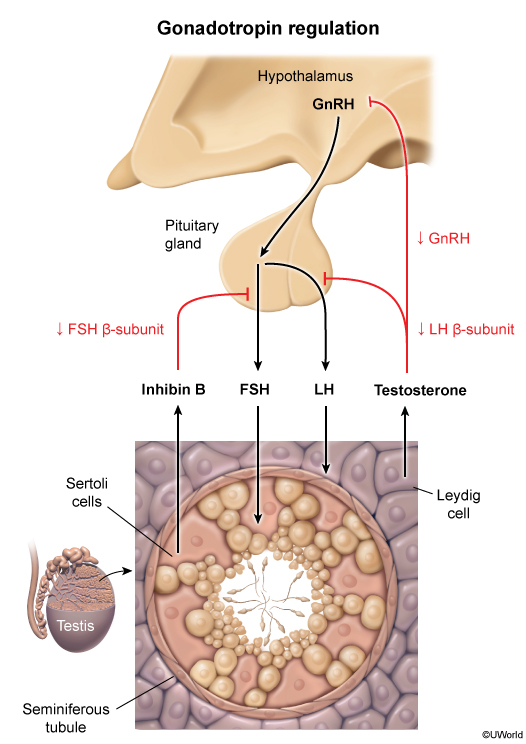
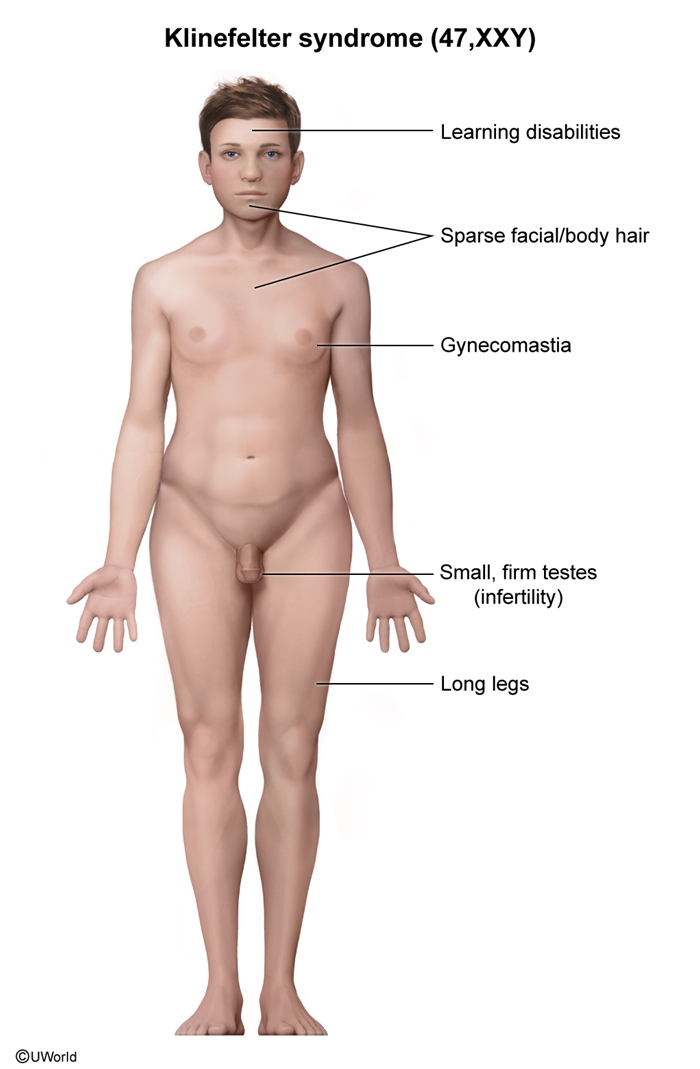

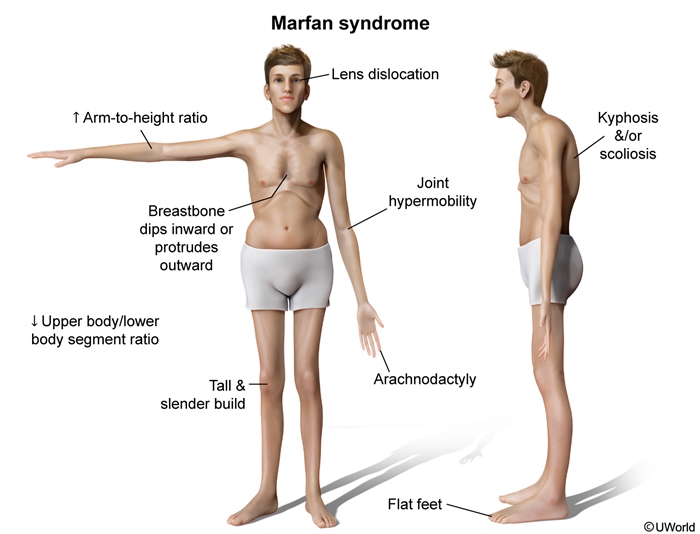
Images
